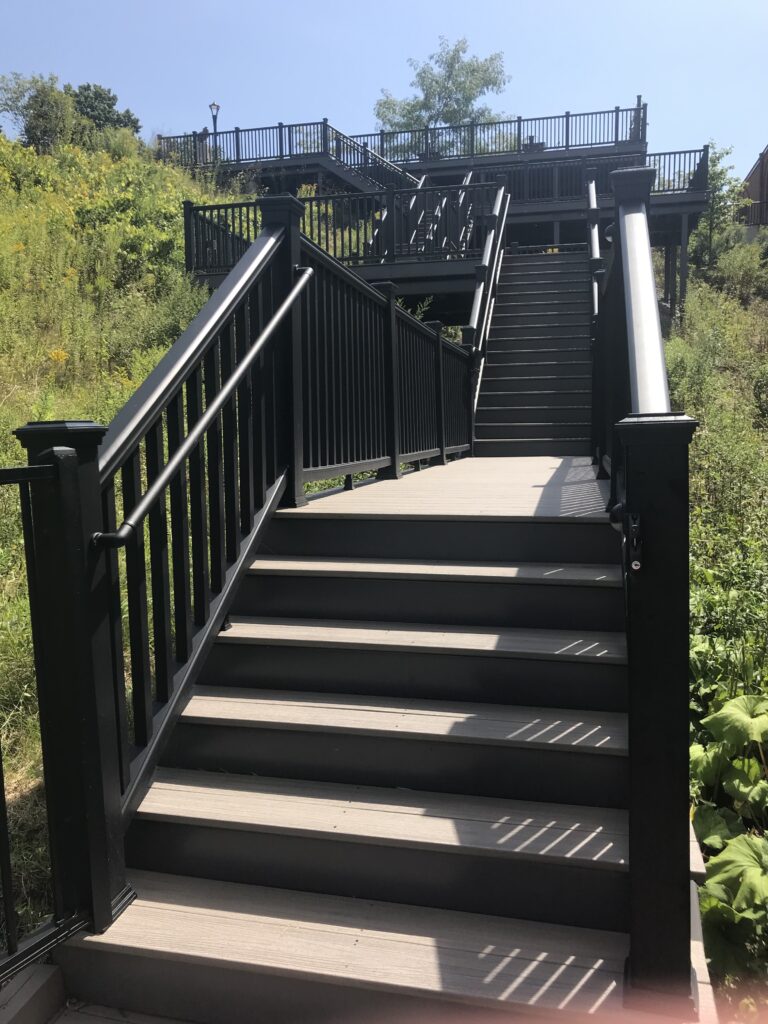As we get older we shed layers of invincibility. We injure ourselves more easily while taking longer to recover. Getting healthy at a younger age was a goal that, once reached, we tend to let slip. This is especially true for dieters who have to resume dieting after cycles of losing weight. At a certain age we have to be wary about letting things slip, as we get closer to when we can no longer recover. Septuagenarians approach that age when we must pursue health strategies that are more about a permanent lifestyle than reaching a goal.
Variety is the spice of life and is one of the key ingredients for maintaining a permanent lifestyle of exercise. In my case the variety of the four New England seasons correspond with four exercise seasons as well. By the time one season and exercise regimen concludes I am ready for the next one.
During the spring months of late March through May I am able to jog with Cindy in the adult stroller for 5-8 miles. From June into early August the deerflies become brutal the further we stray from the village center. I park Cindy at Robertson Plaza as I “run” stair repetitions, or at the village green as I “run” intervals around the perimeter, or at Yale’s summer school campus where I can run either hill reps or intervals without deerflies spoiling my exercise. From late August into early November I return to jogging with Cindy for 7-10 miles, while periodically alternating distance workouts with hill reps or intervals. From mid November to mid March I am unable to go out with Cindy and I either do a stair workout inside the house, or go for a trail jog when coverage is available.

In the past I mentioned how superb the stair workout is for maintaining fitness, while also being the most tedious. I doubt I could do my inside stair workout for a whole year, but because of my changing exercise seasons I do not have to. For that matter, I would even find my favorite exercise during fall season to be tedious if that was my routine year round. I actually look forward to my winter exercise regimen by the time that happens.
Efficiency becomes another important consideration as our remaining life expectancy shortens and what septuagenarians do with our time becomes more precious. This is doubly the case when, as a caregiver, I spend four plus hours each day just with meal time and the efficiency of an exercise frees up more time for other endeavors. This contributes to why I actually look forward to running up and down stairs in the winter. During these months I have a little more time for other projects that keep me sane.
One ingredient for an exercise becoming efficient is providing short bursts of anaerobic activity. This amounts to exercising vigorously enough to be gasping for air. I also include strength training in the form of sit ups and pushups with my efficiency exercise. Strength training provides brain health benefits, in particular the release of brain derived neurotropic factor (BDNF), a neurotransmitter that facilitates and maintains neuroplasticity.
In regards to this and other health matters I advocate you follow the principle and not my actual practice. You can do anaerobic workouts in more varied and enticing ways than sit ups, pushups and stair reps. At a gym you can use rowing, cycling, elliptical or treadmill machines, as long as you intersperse anaerobic bursts. Most gyms also provide a variety of options for strength training.
Sustained aerobic exercise provides the most important benefit of mindfulness, similar to yoga or meditation. With aerobic exercise you are not gasping for air, though you should be exerting yourself at least to the extent that you would not be able to belt out a whole song. As we progressively age the more difficult efficient exercise becomes, as well as varied exercise, but mindfulness exercise may continue.
A leisurely stroll in the woods also calms the mind and benefits the brain, even though the blood flow benefits are not as great. There may come a time when that is all an elderly or disabled person can do … or less. Cindy is not a septuagenarian yet has not been able to stroll on her own for years. Her continued will to live results in part from still getting out in the calm of our scenically pastoral town even without the benefit of exercise.
Variety, efficiency and above all mindfulness are my keys to a permanent lifestyle of exercise to maintain brain health and longevity.

I have great understanding for your will to maintain brain health, in the face of what you are experiencing with Cindy. With my mom, it was heart failure and strokes, probably due in part to a history of obesity. She spent several years in a state of partial mental disability and blindness due to cataracts that could no longer be repaired. She lived to 92 in this state. I am in tension over whether to keep exercising for health, as I do not wish to live that long if I am disabled. She did not exercise much but lived long anyway. My dad was struck down at 72 by brain cancer, out of a very active life, both mentally and physically. We are not in control. So perhaps efforts toward brain health are the answer . . .